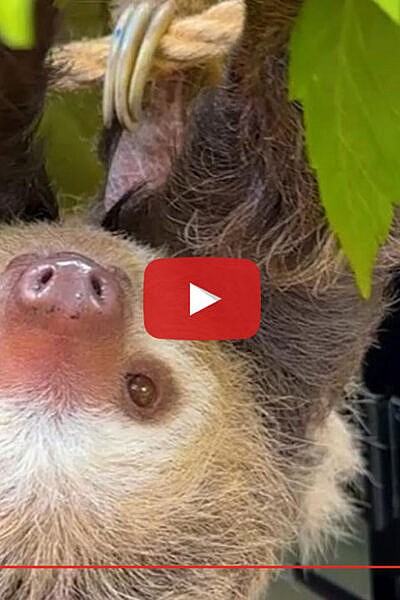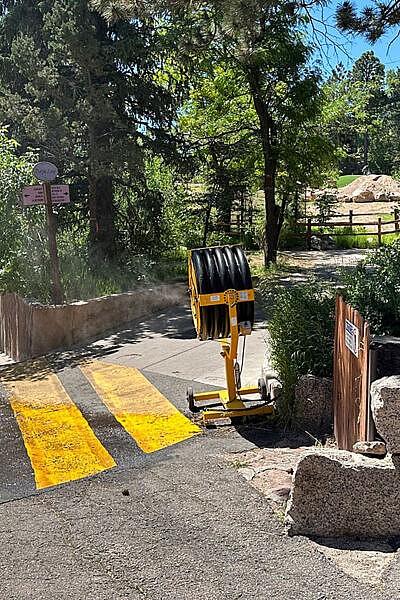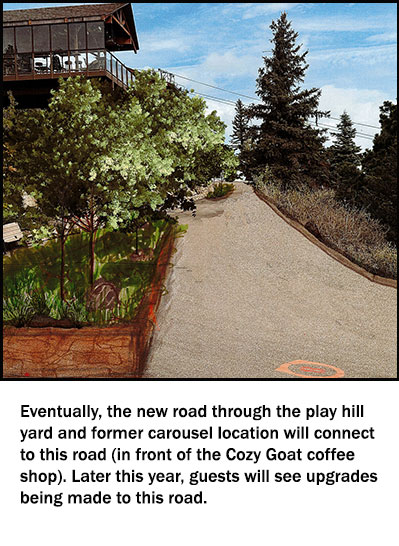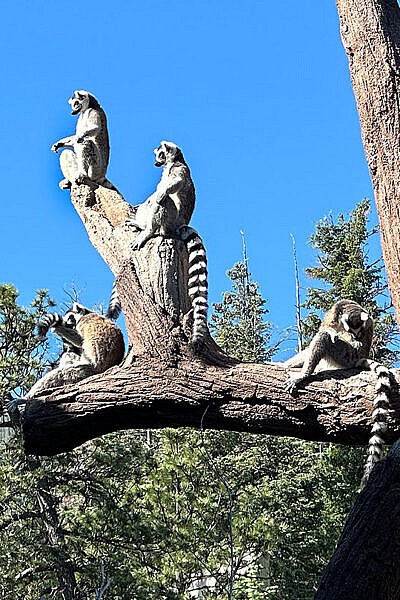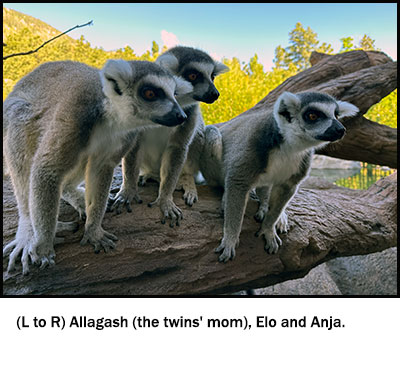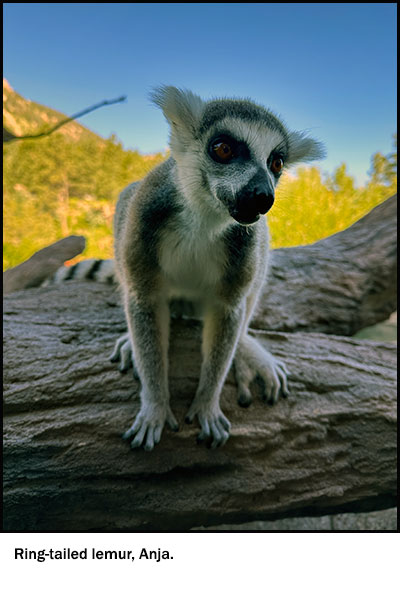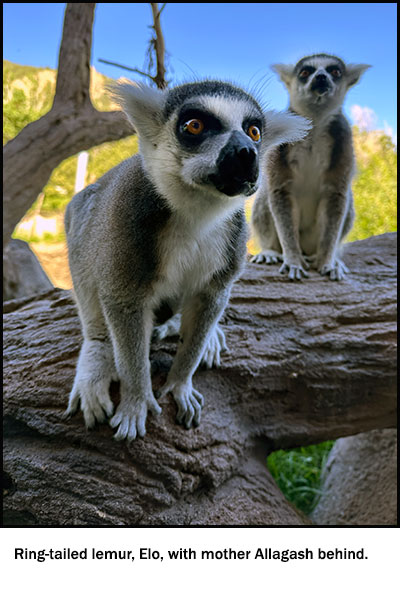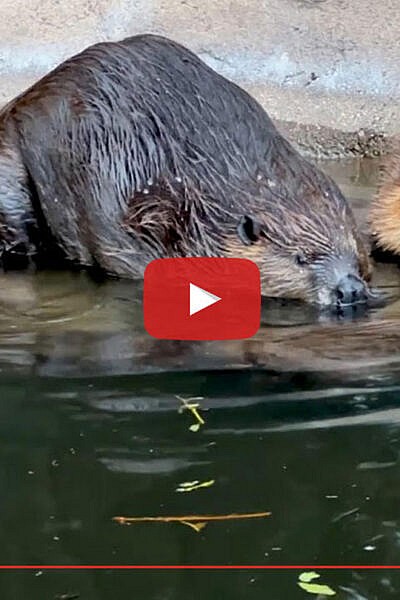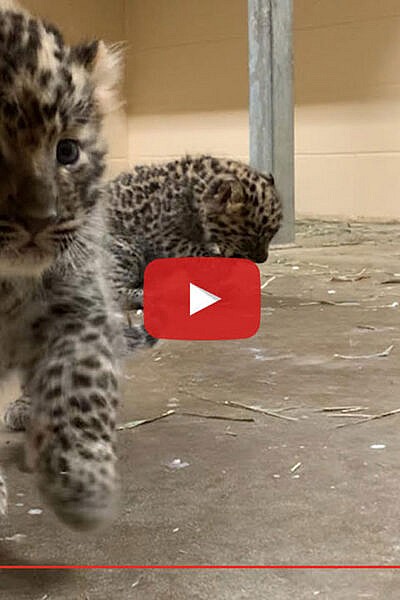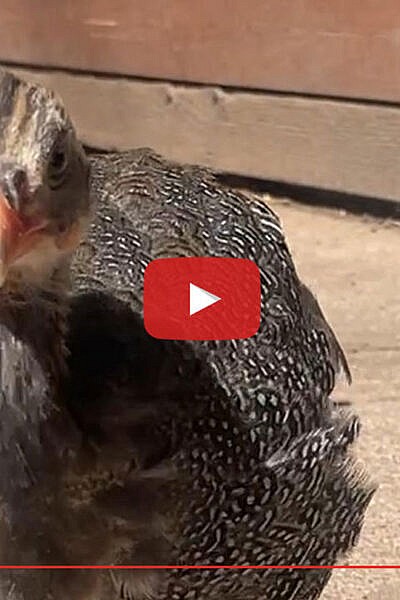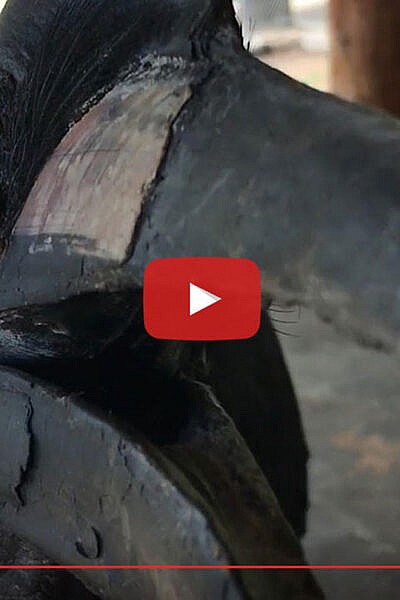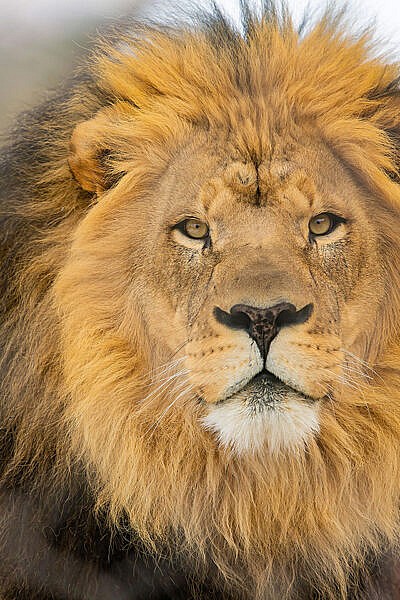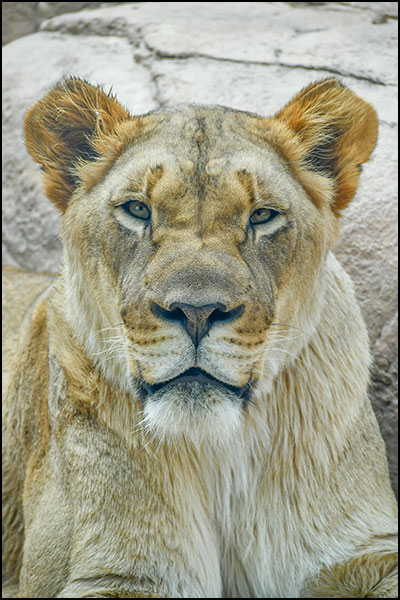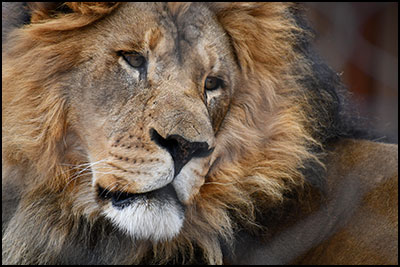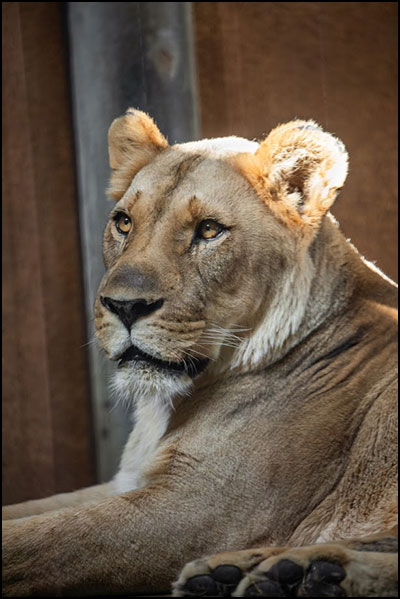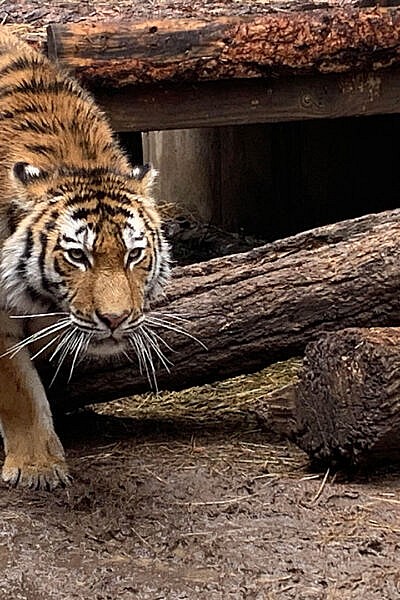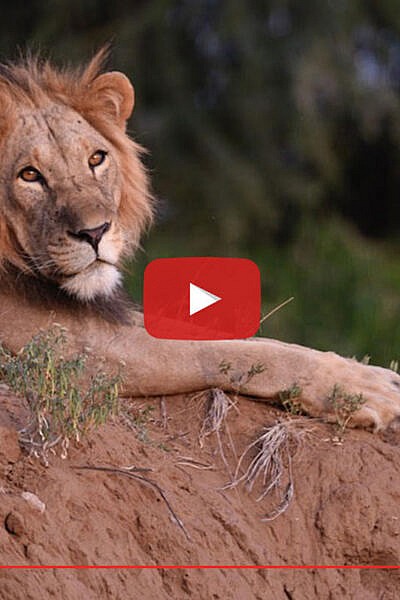Mila, a female Amur tiger, turned two years old behind the scenes on May 1, 2023, and Asian Highlands keepers had more than one reason to celebrate. Her second birthday seemed to be a turning point for the tentative tiger, who arrived at Cheyenne Mountain Zoo in March 2023.
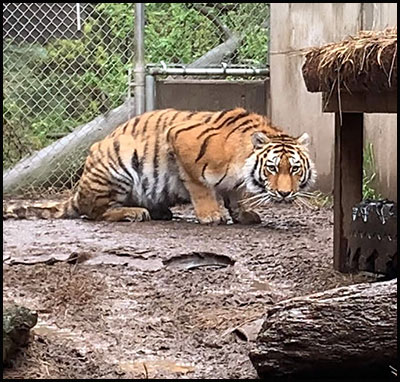
“It feels like we’re finally getting to know Mila, and wow, she’s fierce, and she’s smart,” said Basia Dann, lead keeper in Asian Highlands. “She catches on really quickly. Once you’ve gained her trust, she’s excited to see you and will come over to hang out near you. I’ll go back there with her food bin, and she’ll lie down, put her ears forward and look up at me with her big beautiful eyes. She’s patient while I get a meatball on the tongs and feed her through the fence, and not all tigers are so gracious. She also does an adorable little prance trot between us when we’re training. She’s great.”
Mila was born at Toronto Zoo (TZ) and lived with her mother, Mazy, until earlier this year, when TZ said Mila and Mazy started showing signs they wanted their own space. Around that age, Amur tigers in the wild set off on their own and live mostly solitary lives. CMZoo accepted a future breeding recommendation for Mila and worked with the Amur Tiger Species Survival Plan (SSP) to make a home for her on the mountain.
When Mila first arrived at CMZoo, she did not want anyone to approach her space, which made building a trusting relationship challenging. Luckily for Mila, she has a compassionate, tenacious, patient and talented team of keepers on her side. CMZoo’s dedicated tiger team met with animal behavior experts within and outside of the Zoo to help Mila settle in. Mila’s team met multiple times per week to review her progress and discuss any new lessons learned to constantly update her care plan with her best opportunities for success.
“The first month was a big transition for Mila,” said Dann. “Animals are individuals with unique backgrounds, experiences and tendencies, so we expect them to acclimate to new environments differently. We spent the first few weeks letting her know that she has choices, she is in control of her environment, and she can be confident knowing that we’re not going to rush her into anything before she shows us she’s ready.”
The Asian Highlands team at CMZoo has 48 combined years of experience working closely with a number of tigers over the years. They’ve welcomed tigers from other zoos on moves recommended by the Amur Tiger SSP, like Mila, and they’ve prepared tigers to move to other facilities on those same sorts of recommendations. They leaned on that experience to help Mila settle in.
“It’s an art and a science,” said Dann. “We had a plan in place before Mila arrived, based on what has worked well for other tigers and our knowledge of the species’ tendencies and needs, but we’re also dedicated to listening to our animals and making changes to our plans to best support them as individuals.”
From the moment she arrived, her care team respected Mila when she showed them she wasn’t comfortable with visitors, by growling or jumping. To communicate that they understood what she wanted and respected it, they would leave her space immediately, and try again later. Their intention was to let Mila know that she did not need to have big responses to be heard.
“Our experience told us that she would start to settle down when she recognized that she was in control of the situation, and she did,” said Dann. “We wanted her to learn that we get it. Sometimes you’re going to have big feelings, and we’re always going to respect that. If you want us to go away, we will, and you can tell us in a way that helps you feel calm.”
Mila got it, too. Incrementally, she started reducing her reactions, learning that her keepers were tuned into her. Even a slight lip curl would be seen and respected as a notice for keepers to give her some space. By around her second birthday, she had built such trust in her team that she didn’t feel the need to request space as often. Dann says her proudest moment was one day when keepers went to deliver Mila’s dinner.
“It’s like something really clicked for her that day,” said Dann. “She must have heard us coming, because we went into the building, and she had come out of her den and was waiting for us by the device we use to safely deliver food. She was just sitting there calmly, looking at us with her big adorable eyes, not making a sound at all, and waiting patiently. It was a big moment.”

Since then, Mila is making massive progress, and keepers couldn’t be more proud of her. She enjoys exploring outdoors in a side yard, investigating enrichment, and even training. She previously learned an up-and-down behavior at TZ, where she stands on her back legs and reaches up on the fence between her and her keepers, so they can get a good look at her body condition and paws. Recently, she has learned how to translate that behavior to her new space and team at CMZoo. She’s also learning how to shift into different spaces when asked, and she’s even taking rewards directly from keepers, who use tongs to deliver yummy snacks.
“She’s starting to get excited about enrichment we offer her,” said Dann. “She’s comfortable enough to be vulnerable around us, and she knows she is safe to direct her attention to cardboard boxes instead of keeping an eye on us when we’re in the building. We’ve seen her getting playful, and having a spring in her step. When she encounters something new, she does this little head tilt like she’s trying to get a better look at it.”
Next up for Mila: a new swimming pool. Keepers plan to introduce her to new opportunities for enrichment and training as she continues to progress. There’s no timeline for when she’ll be ready to explore the main yard, where guests will be able to see her. But, keepers are excited at the new pace she’s setting for achieving milestones. For now, she’s spending lots of time in her private yard, watching guests on the Sky Ride, soaking up the sunshine, rolling around in the mud and spying on her stripy neighbor, CMZoo’s 8-year-old male Amur tiger, Chewy.
“She can see him through a window in the side yard wall, and she’s very curious,” said Dann. “She has heard him chuff when they’re in separate spaces in the same building, too. She’s so cute. Her head tilts slightly to the side and her ears go forward, like ‘Who’s that?’. She hasn’t talked back yet.”
Howdies – which are opportunities for animals to see each other through a protective barrier as a first step toward introductions – with Chewy won’t likely happen for years because she’s still so young and there’s no immediate need. For now, Mila has plenty of other things to learn and to teach her team about herself.
“She’s going to keep us on our toes, that’s for sure,” said Dann. “I have so much respect for her. Look at what she has accomplished over the past few weeks, and imagine what she’ll do next, now that she knows she’s going to have a life of control, choices, care and hopefully lots of fun with us.”
CMZoo will continue to share updates on Mila as she makes progress, and will let fans know when they can see her in the main yard, when the time is right.
Back to The Waterhole
